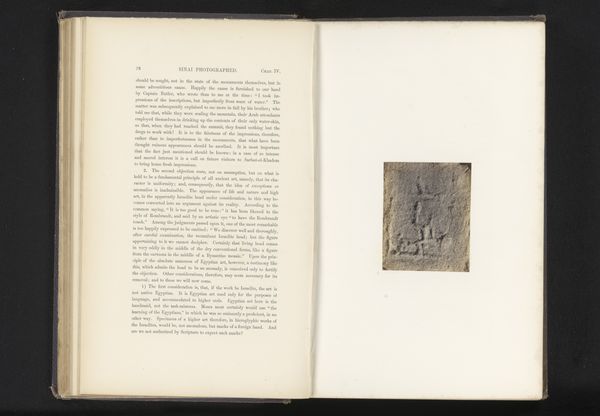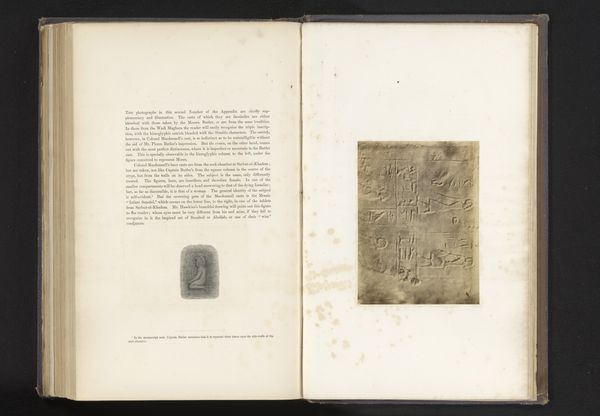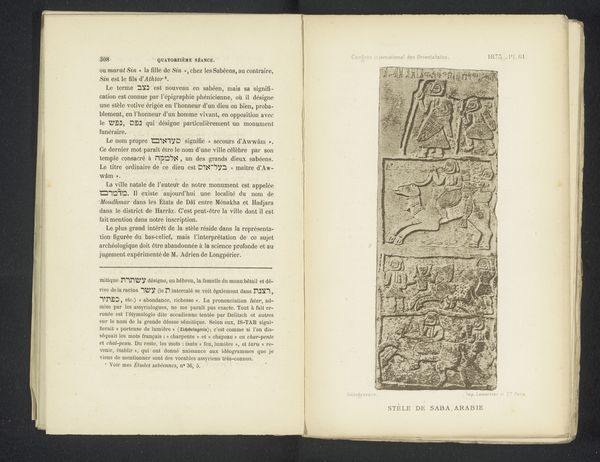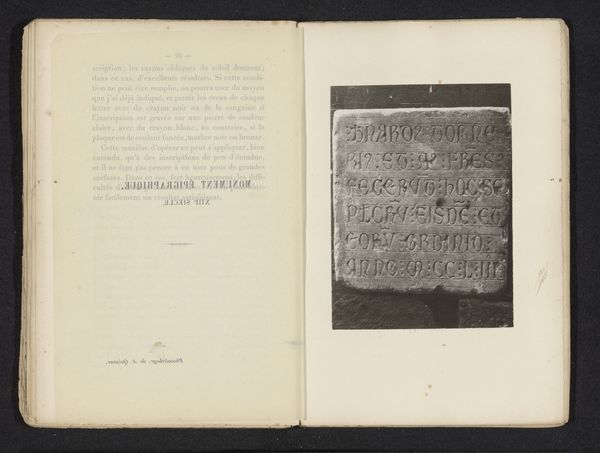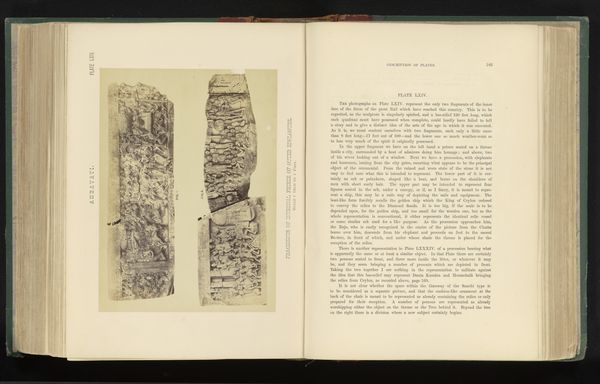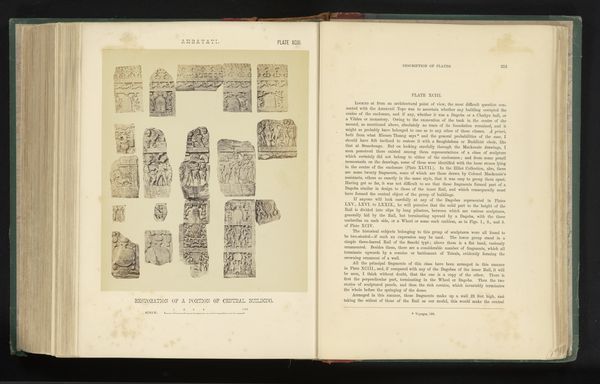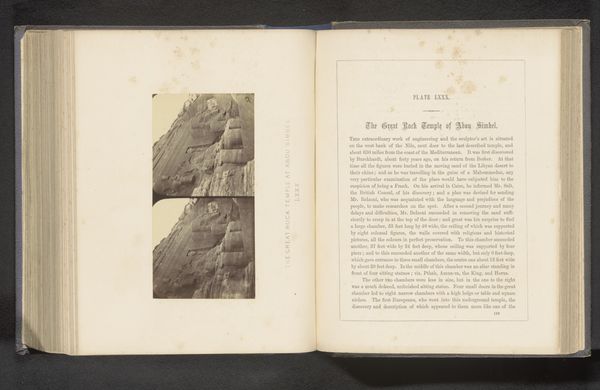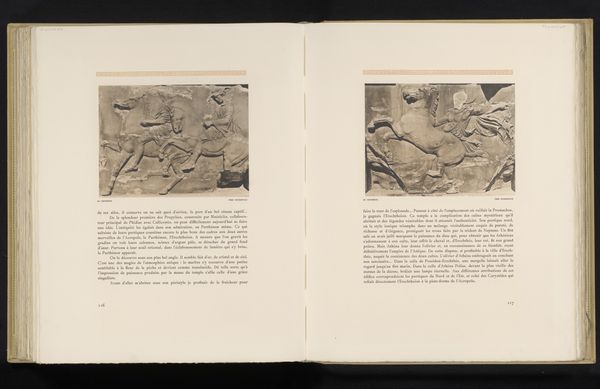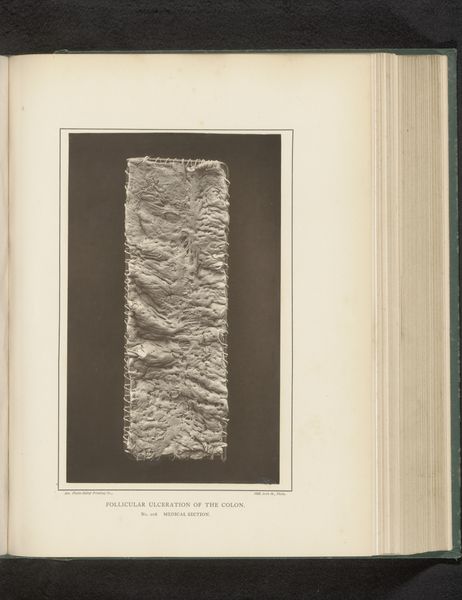
mixed-media, collage, print, photography, albumen-print
#
mixed-media
#
collage
# print
#
ancient-egyptian-art
#
photography
#
ancient-mediterranean
#
history-painting
#
albumen-print
Dimensions: height 153 mm, width 107 mm
Copyright: Rijks Museum: Open Domain
Curator: We’re looking at a fascinating item here, “Gipsen afgietsel van een tablet met hieroglifen uit Wadi Maghareh.” It’s a mixed-media work created before 1862 by A.J. Brown, incorporating photography, collage and print elements. Editor: It's quite striking; a photo pasted into a book, presumably? The hieroglyphs, at first glance, look deeply weathered, almost eroded. They evoke a sense of antiquity and resilience. Curator: Yes, the albumen print captures a plaster cast of a tablet. Note how photography as a medium enabled the replication and dissemination of cultural artifacts, particularly in an age of expanding colonial interests and archaeological discoveries. The method of collage is interesting—a material layering. The original print work and cast used for the image, like many made by travelers at the time, served scientific purposes but often reproduced exploitative relationships. Editor: Absolutely. Focusing on the symbols themselves, they clearly have roots in ancient Egyptian art, although the arrangement and presentation hint at later interpretations. It seems there's an attempt to understand the power dynamics conveyed by pharaohs through consistent representation of iconography—power, divinity, kingship. Do we know if there were conscious decisions for reproducing the artifact rather than the tablet? What statement might Brown have tried to convey through reproduction and reinterpretation? Curator: These photographic reproductions circulated widely through publications. Perhaps that accessibility to be viewed en masse, its relative ease in transport as print rather than sculpture, shaped what "ancient Egypt" signified to a wider 19th-century audience beyond scholarly elites. I see these works through their processes, not merely in their representational intent. Editor: Interesting! I was thinking the faded albumen tones contributes a great deal—it feels like looking at a fragile, unearthed memory, even a constructed one. The very act of reproducing a copy allows Brown to emphasize symbols from ancient Egyptian visual culture and repurpose meanings associated with gods and royal authority. Curator: Indeed. The method speaks volumes—photography democratizes access, while the plaster cast and subsequent reproduction via print highlights labor and material consumption—commodification of the past, if you will. Editor: The way these combined media preserve, interpret and share fragments of a bygone era provokes so much thinking on lost, but now translated meanings! Curator: I've enjoyed how discussing this material assemblage draws us to the larger socio-cultural forces in play at the time.
Comments
No comments
Be the first to comment and join the conversation on the ultimate creative platform.
